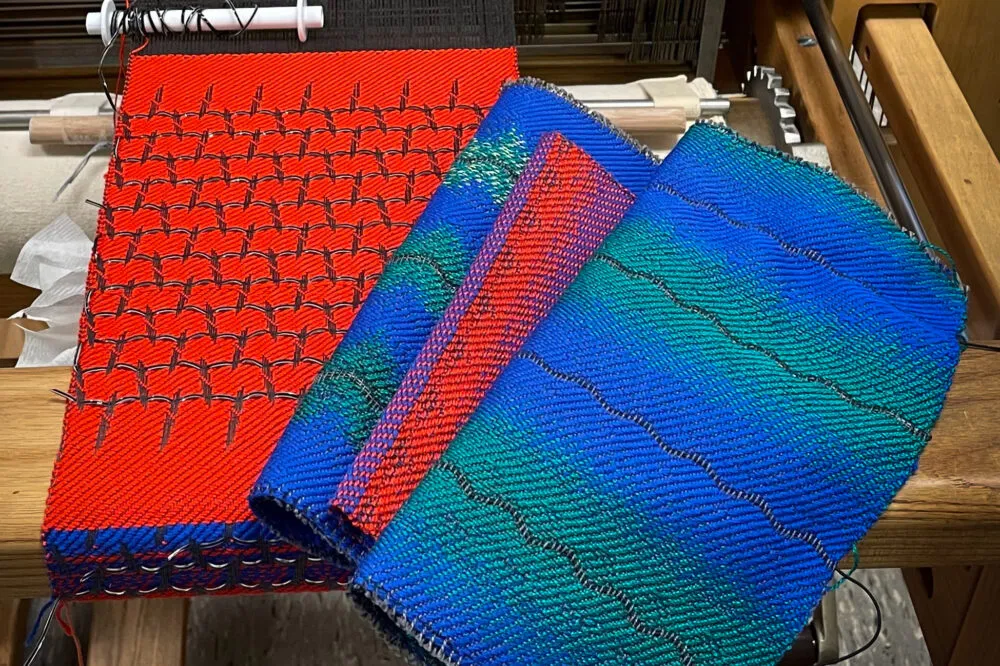A new kind of fibre material is able to detect a heartbeat, handclaps or even faint sounds, unlocking a new avenue for wearable technology that can be worked into clothing.
This development comes from a collaboration of researchers at the Massachusetts Institute of Technology and the Rhode Island School of Design.
Every fabric vibrates to audible sounds but normally at a nano-level (incredibly small sizes). To capture these minute signals, the researchers developed a flexible fibre that, when woven into a fabric, bends with it.

The researchers used a material that was piezoelectric. This means it can generate an electric charge in response to being moved (or in this case, an individual moving about while wearing a fabric). This provides a way for the fabric to convert sounds into signals that can be tracked, or to activate something.
Traditionally, fabrics are used to dampen sound but the team’s aim is to readdress conventional use, looking to make fabrics more functional. A fabric that can detect noise and act on it has a number of uses.
“Wearing an acoustic garment, you might talk through it to answer phone calls and communicate with others,” says Wei Yan, the lead author who is now an assistant professor at the Nanyang Technological University in Singapore. “In addition, this fabric can imperceptibly interface with the human skin, enabling wearers to monitor their heart and respiratory condition in a comfortable, continuous, real-time, and long-term manner.”
To come up with this technology, the team took inspiration from the human ear. Sound travels through the air as very slight waves of pressure. When these waves hit the ear, the eardrum uses a circular layer of fibres to translate the pressure waves into vibrations. These vibrations are converted into electrical signals that can be sent to the brain.
The team looked to create a fabric equivalent of the ear that would be soft, durable, comfortable and able to detect sound. To achieve this, the team used a fabric with stiff fibres to convert sound waves into vibrations. The fibres needed to bend with the fabric to produce an electrical output.
To make this material, a layered block was created using a piezoelectric layer as well as ingredients that enhance the material’s vibrations in response to sound waves. This resulted in a material that is about the size of a thick marker. It was then heated and stretched into thin, 40 metre-long fibres.

This new material was attached to a sheet and tested with a laser, measuring the vibration of the sheet in response to a speaker playing sound nearby. The sound varied in different levels of volume, with the sheet generating a proportional electrical current.
To take the tests a step further, the team wove the material into conventional yarns to produce panels of drapable, machine-washable fabrics. They tested this by clapping nearby, getting an accurate response that matched distances.
“This shows that the performance of the fibre on the membrane is comparable to a handheld microphone. The fabric was able to detect the angle of the sound to within one degree at a distance of three meters away,” says co-author Grace Noel.
Along with the measurement of directional sound, the team also got strong results when attaching the fibre to a shirt lining by the chest. This could accurately detect a healthy heartbeat in a healthy volunteer.
The researchers see the technology being helpful in a number of ways, including measuring heartbeats, and the well-being of a pregnant woman’s child, as well as aiding blind people with directional noises.
But it's not just in clothing that they are now looking to expand the research. “It can be integrated with spacecraft skin to listen to accumulating space dust, or embedded into buildings to detect cracks or strains,” Yan proposes. “It can even be woven into a smart net to monitor fish in the ocean. The fibre is opening widespread opportunities.”
Read more:
